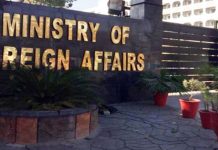By Ai Jun
The passing year of 2020 witnessed the complete dysfunction of the US’ political and social system. It is suffering from at least two viruses. The first is the novel coronavirus. And the second is the severe chronic disease in US society – racism. Unfortunately, leaving the two grave challenges behind, The Wall Street Journal (WSJ) rolled out a lengthy piece to castigate China on the very last day of the year, alleging “Beijing Accelerates Campaign of Ethnic Assimilation.”
The headline is eye-catching, just like the same newspaper placed a sickening headline on its website last February, narrating that “China is the Real Sick Man of Asia.”
Accusing Beijing of pushing for ethnic assimilation, the story is nothing but fabrications. Its content is made up of baseless allegations and attacks that have been repeated by Western media outlets time and again. It claimed China’s government is applying “high-tech police surveillance” to “watch on and control” the country’s minority populations. Moreover, it accused a new Chinese regulation in Inner Mongolia – encouraging Mandarin-language education – as an attempt to “erase” the local Mongolian language.
It is not surprising that the WSJ intentionally skipped the government’s earnest efforts to root out terrorism in Xinjiang, nor will it ever acknowledge that the “mass detention” facilities claimed by them, are actually vocational education and job training institutions and schools. Over the years, steps have been taken in the region to help local people learn languages, study laws and acquire skills so that locals can distance from the influence of religious extremism and return to making a decent life.
Today, not only has Xinjiang seen a growing sense of security and stability among its residents, Xinjiang’s local employment rate has sharply increased. Also, the gap between the rich and poor is narrowing in the region.
The WSJ will neither discuss that installing public surveillance facilities is a common practice by governments worldwide to maintain security and social stability. Official data shows that as early as in 2010, there were 4.2 million surveillance cameras in Britain, accounting for 25 percent of the world’s total. Citywide surveillance systems have also been launched throughout the US states targeting pedestrians and vehicles. In many US media reports, the same facilities are justified, necessary to improve public security and make streets safer in the US and UK, but they are unjustified in China, which are used for controlling ethnic minority groups and encouraging assimilation. Aren’t their double standards too obvious?
The WSJ deliberately skirted around the fact that Beijing did not force students in Inner Mongolian to give up Mongolian language at all. It turned a blind eye to the fact where new local regulation has not changed its bilingual education system. And the newspaper will never acknowledge that learning Putonghua can boost local students’ opportunities for more access to education, enhance communication with other tribes of the country, and improve their employment prospects.
Anyone who has lately been to Xinjiang or Tibet knows that, nowadays, terrorist assaults, underground killings, and economic degradation can be found nowhere at all. For many years, Chinese ethnic minorities have been enjoying preferential policies in childbirth and education. Local people’s living standards are constantly rising. China’s outlying ethnic provinces are becoming thriving regions.
In contrast, in the US, the tragedy of George Floyd, an African-American man who died in May after being pinned to the ground by a white police officer’s knee, triggered an outbreak of violent protests against vicious racism across the country.
–The Daily Mail-Global Times news exchange item




